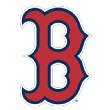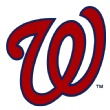Major league teams open camps this week under the most unusual of circumstances. For a variety of reasons, there are an unprecedented number of quality free agents remaining unsigned, including nine of FanGraphs' top-20-rated free agents. For a reference point, 19 of FanGraphs' top 20 free agents had signed by Jan. 23 last offseason. The Yankees and Dodgers have combined to spend just $12 million on free agents, which speaks to a number of the factors at play: the influence of a more punitive luxury tax, the seemingly uniform belief clubs have in the inefficiency of free-agent spending and teams holding back cash to court the talent available in next year's historic class.
The game is in an era of extremes. A record number of home runs were hit last season, the product of increased launch angles, a willingness to trade contact for power -- and perhaps a juiced ball. By FanGraphs' PITCHf/x data, velocity has increased every year since 2008. Relievers continue to soak up more and more innings. Even the way teams are constructed has become more extreme. More teams are being rebuilt in a more dramatic manner, in an NBA-like tanking fashion following the path of the Chicago Cubs and Houston Astros. There are a growing number of have-nots and superteams. For example, eight teams posted run differentials of 100 runs or greater last season; in 2011, 2012 and 2014, only four teams exceeded 100-plus run differentials. But in the same season, on the negative side of the ledger, nine teams had run differentials of minus-90 or worse in 2017, the most since 2007.
The game is at an unusual place, and because of it, there are contending teams -- and some teams in that middle ground that could contend -- with considerable question marks that remain unaddressed as spring training approaches. The good news? There is still time to answer these questions, and there is plenty of talent available.
 Question No. 1: Can the Minnesota Twins contend with their rotation?
Question No. 1: Can the Minnesota Twins contend with their rotation?
The Twins were already in need of starting pitching when I made the case that they ought to pursue the top free-agent pitchers available last month. That need only increased with the news that Ervin Santana will miss 10 to 12 weeks after undergoing finger surgery.
The Twins were a surprise team a year ago, and they remain in a mostly favorable environment. The AL Central is home to the Royals, White Sox and Tigers, clubs at various stages of deep rebuilds; all three are expected to be among the worst teams in baseball. The Twins will play a combined 57 games against those clubs, which gives them a considerable advantage in the AL's wild-card picture. Although the Indians are one team stronger on paper in the division, the Indians wouldn't be the first front-runners to have injury or misfortune lead to a season that falls short of expectations.
The point is this: The Twins, despite an 81-win FanGraphs projection and an 82-win PECOTA projection, ought to be aggressive, particularly while they control young assets such as Byron Buxton, Miguel Sano and Jose Berrios.
The problem? Only seven teams project to produce fewer wins above replacement from their rotation than the Twins' 8.3 WAR mark, according to FanGraphs. The website also forecasts every Twins starter to produce an ERA and FIP north of 4.50.
Moreover, even with complete health, the Twins don't have a true ace, and such dominant arms only become more important in the postseason, when they can take up a larger share of workload due to the increased number of days off and the heightened sense of urgency.
In summary, no team needs an ace like the Twins do. For instance, Dan Szymborski estimated that Yu Darvish -- who signed with the Cubs on Saturday -- would have boosted the Twins' playoff odds by 16 percent. The Twins were connected to Darvish and have been tied to other starters. Perhaps no team has a greater motivation to sign one of the top remaining free-agent arms, such as Jake Arrieta or Lance Lynn. Moreover, with so many large-market clubs determined to stay under the luxury tax threshold, this winter could present a rare opportunity for the Twins to land an impact free-agent arm.
 Question No. 2: Can the Colorado Rockies get production at the corners?
Question No. 2: Can the Colorado Rockies get production at the corners?
Historically, the Rockies have had issues pitching in their mile-high environment. But coming off their wild-card berth a season ago, interestingly, pitching is not their problem. Their rotation produced an ERA- of 91 last season (ERA- takes into account ballpark and league run environment), which ranked seventh in baseball. Rather, the Rockies' issue is an offense that produced a weighted runs created-plus mark (or wRC+, which adjusts to league and ballpark scoring environments) of just 87, with 100 the league average. Only the Pirates, Giants and Padres had weaker offenses in the majors.
There are some particular problem areas -- and all at traditional run-production positions.
The Rockies' right fielders posted a 79 wRC+ last season, 28th in the game, and they ranked 29th in their first-base production (87 wRC+). Perhaps former prospect David Dahl could remain healthy, and perhaps the Rockies can get more out of Ian Desmond. But FanGraphs' projections are bearish, projecting the Rockies to rank 27th in first-base production (1.0 fWAR), 28th in right-field production (0.3) and 30th among left fielders (minus-0.4) this season. Those forecasts are among the greatest lineup holes among all potential contenders.
The Rockies have been one of the few aggressive teams this offseason. Until the Cubs signed Yu Darvish for $126 million, the Rockies led baseball with a cumulative $114 million guaranteed to free agents signed this offseason, and they did so by focusing on bolstering their bullpen with top relief arms such as Wade Davis, Bryan Shaw and Jake McGee. But there is a case to be made that if the Rockies are to return to the postseason, they will need to keep spending. Plenty of upgrades remain available, from big-ticket items such as J.D. Martinez (imagine Martinez's bat in Coors Field) and Eric Hosmer to cheaper alternatives such as Logan Morrison and Lucas Duda.
The Rockies have been aggressive this offseason, but a 74-win PECOTA projection and an 80-win FanGraphs forecast suggest they still have holes they need to fill.
 Question No. 3: Will the Boston Red Sox get offense from their DH?
Question No. 3: Will the Boston Red Sox get offense from their DH?
There's a reason so many have assumed J.D. Martinez will eventually land with the Red Sox. For starters, Hanley Ramirez has been below replacement level in two of the past three seasons and is currently atop the depth chart at DH, a lineup position that was such a strength for the team during the David Ortiz era. The Red Sox also figure to have to contend with the Yankees for supremacy in the AL East. According to FanGraphs' projections, the Red Sox (92 wins) project to hold a slim one-game lead over the Yankees (91 wins).
Boston reportedly has a standing five-year offer to Martinez. While there is concern about how Martinez will age, there's little concern about how his bat will play in the short-term. Martinez's wRC+ mark of 147 ranks seventh in baseball since 2015, and his 166 mark last season trailed only those of Mike Trout and Joey Votto.
Moreover, there is a competitive advantage to be found in rostering a quality DH. Designated hitters were historically poor last season, combining for a 99 wRC+, their second-lowest mark on record. Although few American League teams choose to spend significant dollars on the DH spot, there is an opportunity -- and need -- there for the Red Sox.
 Question No. 4: Do the Washington Nationals need an upgrade behind the plate?
Question No. 4: Do the Washington Nationals need an upgrade behind the plate?
The Nationals are so talented that they could run away with the NL East without making a single roster addition. However, they also have one of the most glaring voids among contending clubs: at catcher. The Nationals signed Matt Wieters last February, and there was a reason Wieters remained unsigned that late into the offseason. In an era when pitch framing has been quantified and valued by clubs, Wieters grades as one of the game's worst receivers.
Last season, his framing was below average for a fifth consecutive year, falling to a career-worst 13.6 runs below average, according to Baseball Prospectus' framing metrics. That ranked him 108th out of 110 major league catchers. Moreover, his bat produced a career-worst 62 wRC+.
Even without framing, Nationals catchers accounted for minus-1.1 fWAR last season. The only positional groups by team that were worse were the left fielders of the Giants (minus-1.5 fWAR) and Braves (minus-1.3), the Giants' third basemen (minus-1.8) and the Padres' shortstops (minus-2.5). There's a reason the Nationals have been connected to Marlins catcher J.T. Realmuto in trade rumors.
Although the Nationals might not need to add a catcher such as Realmuto to return to the playoffs, they are motivated to maximize their last year of control of Bryce Harper and imagine Max Scherzer and Stephen Strasburg getting the benefit of more calls, particularly in the postseason.
 Question No. 5: Who's on third for the Atlanta Braves?
Question No. 5: Who's on third for the Atlanta Braves?
Although the Braves might not quite be ready to contend in 2018, they are on the way back up, it seems, from their rebuilding process. They have arguably the game's top farm system, led by Ronald Acuna. They have a legit superstar in Freddie Freeman, and, when including pitch framing, another one in catcher Tyler Flowers, who is in the final year of his deal. They have interesting young rotation pieces and high-upside arms nearing or having already arrived in the majors.
What the Braves could use is a third baseman, as they head into camp saying that Johan Camargo is their starter. The Braves project to produce just one win from the position and were so thin there a year ago that they briefly played Freeman at the hot corner.
With Todd Frazier signing with the Mets, the Angels signing Zack Cozart and the Yankees not seeming interested in addressing their third-base needs (with prospect Miguel Andujar getting closer to the majors), there doesn't seem to be much of a market for free agent Mike Moustakas. But Moustakas is just 29 and could be part of the next competitive Braves team, whether it arrives this coming season or down the road.
